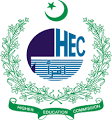Environmental Study Of “Bahao”
DOI:
https://doi.org/10.58760/mairaj.v2i2.32Keywords:
literary criticism, Marxist criticism, proposing solutions, literature, identifyingAbstract
Ecocriticism is an important theory among the new critical theories. Its formal inception in Western literature can be seen after the eighth decade of the last century. It took a long time to establish itself and gain acceptance there. Ecocritics were able to fully explain and use it in literature only after the 1990s.The term Ecology emerged in the middle of the 19th century. The name of German Biologist Ernst Haeckel is associated with this term.Ecology studies the relationship of living organisms with the environment and the ways they cope with it. When the term Ecology was used in literary criticism, it became known as eco-criticism. In Urdu, it has been translated as environmental literary criticism.Initially, Cheryll Glotfelty is credited with promoting this theory, and she is also considered the first American Ecocritic. According to Cheryll, environmental literary criticism is the study of the relationship between environment and literature. Just as feminist studies studied literature based on gender differences and Marxist criticism examined literature from a class perspective, Ecocriticism is based on earth-centered studies. In this context, literature, culture, and environment are of fundamental importance.Environmental literary criticism is different in every way from its contemporary movements that focus on the individual and society. The biggest driver of ecocriticism is the threats to nature. This theory not only describes the relationship between literature and the environment, but also takes into account the things that humans have associated with nature.Ecocriticism applies ecological concepts to literature. It studies the system of relationships between human culture and nature that is based on equality and mutual respect rather than the dominance or monopoly of one. Ecocriticism considers the atmosphere, environment, natural landscapes, culture, lifestyle, methods, locality, and rural environment present in literature and the way they are described. The preferences of environmental literary criticism include exploring indigenous and local characteristics in literature, identifying the threats they face, and proposing solutions to them.
The theory of environmental literary criticism was introduced in Urdu literature in the 21st century. The first novel written in the context of ecocriticism is "Pagal Khana" by Hijab Imtiaz Ali.







